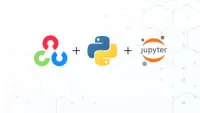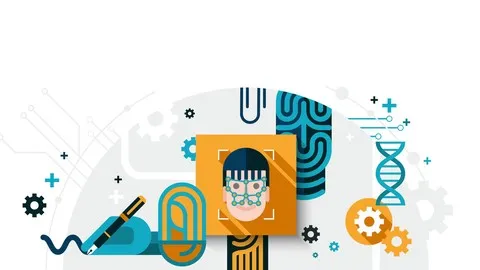
Computer Vision with OpenCV Python Official OpenCV Course 
This official OpenCV course provides an introduction to computer vision using the OpenCV library. Learn to use the world's largest and most comprehensive computer vision library to develop powerful applications with Python. ▼
ADVERTISEMENT
Course Feature
![]() Cost:
Cost:
Free
![]() Provider:
Provider:
Udemy
![]() Certificate:
Certificate:
No Information
![]() Language:
Language:
English
Course Overview
❗The content presented here is sourced directly from Udemy platform. For comprehensive course details, including enrollment information, simply click on the 'Go to class' link on our website.
Updated in [March 06th, 2023]
Computer Vision with OpenCV Python Official OpenCV Course is an excellent course for those who want to learn about computer vision and artificial intelligence. This course provides an introduction to OpenCV, a powerful open-source library for computer vision and image processing. It covers topics such as image processing, object detection, and machine learning. It also provides hands-on experience with Python and OpenCV, allowing learners to apply their knowledge to real-world problems. The course also includes a comprehensive overview of the OpenCV library, including its features, functions, and usage. Learners will gain an understanding of how to use OpenCV to create powerful computer vision applications. Additionally, the course provides guidance on how to develop and deploy computer vision applications using OpenCV. Finally, the course provides related learning suggestions to help learners further their knowledge and skills in computer vision and artificial intelligence.
[Applications]
The application of this course can be seen in various fields such as robotics, medical imaging, security, and surveillance. It can be used to develop applications that can detect objects, recognize faces, and track movements. It can also be used to create applications that can process images and videos for various purposes. Additionally, it can be used to develop applications that can recognize text from images and videos. Furthermore, it can be used to develop applications that can detect and recognize objects in 3D space.
[Career Paths]
1. Computer Vision Engineer: Computer Vision Engineers are responsible for developing and implementing computer vision algorithms and systems. They use OpenCV to create and optimize algorithms for object detection, image recognition, and other computer vision tasks. They also work on developing new applications for computer vision, such as autonomous vehicles, medical imaging, and robotics.
2. Machine Learning Engineer: Machine Learning Engineers use OpenCV to develop and optimize machine learning algorithms for various tasks. They work on developing and deploying machine learning models for computer vision tasks, such as object detection, image recognition, and facial recognition. They also work on developing new applications for machine learning, such as natural language processing and computer vision.
3. Robotics Engineer: Robotics Engineers use OpenCV to develop and optimize algorithms for robotic systems. They work on developing and deploying robotic systems for various tasks, such as navigation, object manipulation, and image recognition. They also work on developing new applications for robotics, such as autonomous vehicles and medical robotics.
4. Artificial Intelligence Engineer: Artificial Intelligence Engineers use OpenCV to develop and optimize algorithms for artificial intelligence tasks. They work on developing and deploying AI models for computer vision tasks, such as object detection, image recognition, and facial recognition. They also work on developing new applications for AI, such as natural language processing and computer vision.
[Education Paths]
1. Bachelor of Science in Computer Science: This degree path provides students with a comprehensive understanding of computer science, including programming, algorithms, data structures, and software engineering. Students will also learn about artificial intelligence, machine learning, and computer vision. This degree path is becoming increasingly popular as the demand for computer vision and artificial intelligence grows.
2. Master of Science in Artificial Intelligence: This degree path focuses on the development of artificial intelligence systems and their applications. Students will learn about machine learning, deep learning, computer vision, and natural language processing. This degree path is becoming increasingly popular as the demand for artificial intelligence grows.
3. Master of Science in Computer Vision: This degree path focuses on the development of computer vision systems and their applications. Students will learn about image processing, object recognition, and 3D reconstruction. This degree path is becoming increasingly popular as the demand for computer vision grows.
4. Doctor of Philosophy in Computer Vision: This degree path focuses on the development of advanced computer vision systems and their applications. Students will learn about image processing, object recognition, 3D reconstruction, and deep learning. This degree path is becoming increasingly popular as the demand for computer vision grows.
Course Syllabus
Getting Started with Images
Basic Image Manipulation
Image Annotation using OpenCV
Arithmetic Operations on Images
Bitwise Operations on Images
Using Camera / Webcam in OpenCV
Writing Video on Disk
Image Filtering in OpenCV
Image Features and Image Alignment
Image Stitching and Creating Panoramas
Object Tracking
Face Detection using Deep Learning
Object Detection using Deep Learning
Human Pose Estimation using Deep Learning
Pros & Cons

Precise and easy to understand

Good overview of major functionality

Good course for beginners

Very fast but good

Good information

Need more lectures about filters

Teaching with preexecuted files not effective.
Course Provider

Provider Udemy's Stats at AZClass
Discussion and Reviews
0.0 (Based on 0 reviews)
Explore Similar Online Courses

JavaScript and the HTML DOM

Rapid Usability Research For UX Designers

Python for Informatics: Exploring Information

Social Network Analysis

Introduction to Systematic Review and Meta-Analysis

The Analytics Edge

DCO042 - Python For Informatics

Causal Diagrams: Draw Your Assumptions Before Your Conclusions

Whole genome sequencing of bacterial genomes - tools and applications

Introduction to Computer Vision

Learn Computer Vision with OpenCV Library using Python


Start your review of Computer Vision with OpenCV Python Official OpenCV Course